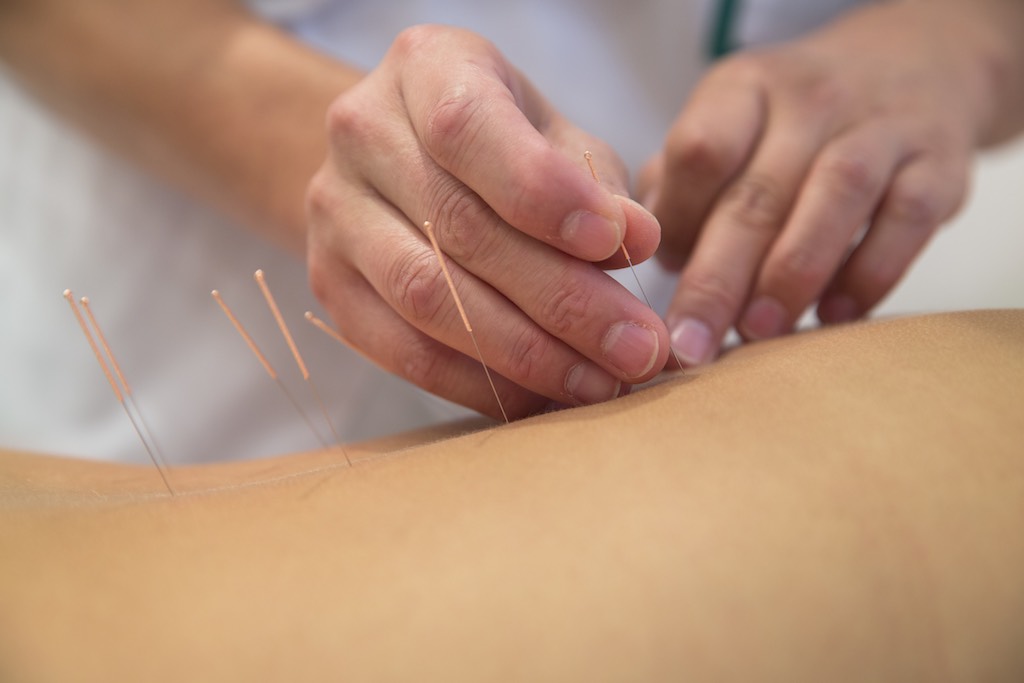Western Medical Acupuncture is used at our clinic to treat a variety of musculoskeletal complaints. It involves the insertion of fine acupuncture needles into muscle and connective tissue to elicit a variety or responses. Some techniques used are also known as dry needling or trigger point needling.
Is Dry Needling Acupuncture?
Acupuncture is used to describe the process by which a solid filiform needle is inserted into the skin and muscle. Most people associate acupuncture with the Traditional Chinese Medicine style of acupuncture.
Although its history is from Traditional Chinese Medicine, Western Medical Acupuncture treatment is based on anatomy, physiology and what is currently known about neuroscience. Traditional Chinese Medicine acupuncture is used to treat a wider variety of ailments from anxiety, infertility, digestive disorders, as well as pain (plus more). It is based on balancing energy flow or ‘qi’ within the body’s meridians and channels as well as yin and yang, and the organs. It is also very effective and not to be confused with Western Medical Acupuncture and dry needling. We often work together with Traditional Chinese Medicine acupuncturists and will refer you to one if we feel it is more appropriate for your condition.
Western Medical Acupuncture is a highly effective technique for:
- pain sensitisation
- chronic muscle tension
- resetting muscle tone and stimulating weakened muscle
- muscle cramps
- calming inflammation in the case of acute and painful injury
- reducing pain
- improving blood flow
- promote healing
What does it feel like?
Dependent on your condition and other factors (emotional state, and tolerance levels) the needles can be applied using different techniques. This may range from gentle needling where the needles are left in place for a period of time, or a stronger technique where the needle is stimulated within the muscle to produce a twitch response (muscle contraction and reflex relaxation – this technique is better known as dry needling or trigger point needling). Generally if you have the strong twitch response you will feel sore for 2-3 days after treatment.
Dry needling has the ability to produce quick results where hands on therapy may take a little longer. It is also great for treating areas that may have become sensitised and unable to tolerate ‘touch’.
Does dry needling hurt?
We use high quality Japanese needles that provide smoother insertion and improved comfort during your treatment. Various gauges (thickness) are used dependent on the area treated. Dry needling can be used as a diagnostic tool by an experienced practitioner. The level of resistance felt with the needle as it passes through different muscle layers can be indicative of how tight it is. Generally as the patient you will only feel sensation if something is wrong with the area, muscle tension or a trigger point is present. For example if you were to have a needle put into your upper traps (neck/shoulder region) and these were extremely tight, you will likely feel a strong dull achey throb and twitch reactions. If you had no issues with your shoulder you won't feel much at all. The good thing about this is that both your practitioner and you can get feedback as to how you are improving with subsequent treatments. The less you feel the better the condition of the muscle.
Is there wet needling?
Yes. There are treatments available from some pain specialist where they identify musculoskeletal trigger points and inject the trigger points with saline and anaesthetic, or cortisone. Dry needling is using a solid filiform needle (acupuncture needle) which is much finer than any injection style needle.
For dry needling or trigger point needling treatment in Wanaka please call (03) 443 2628

